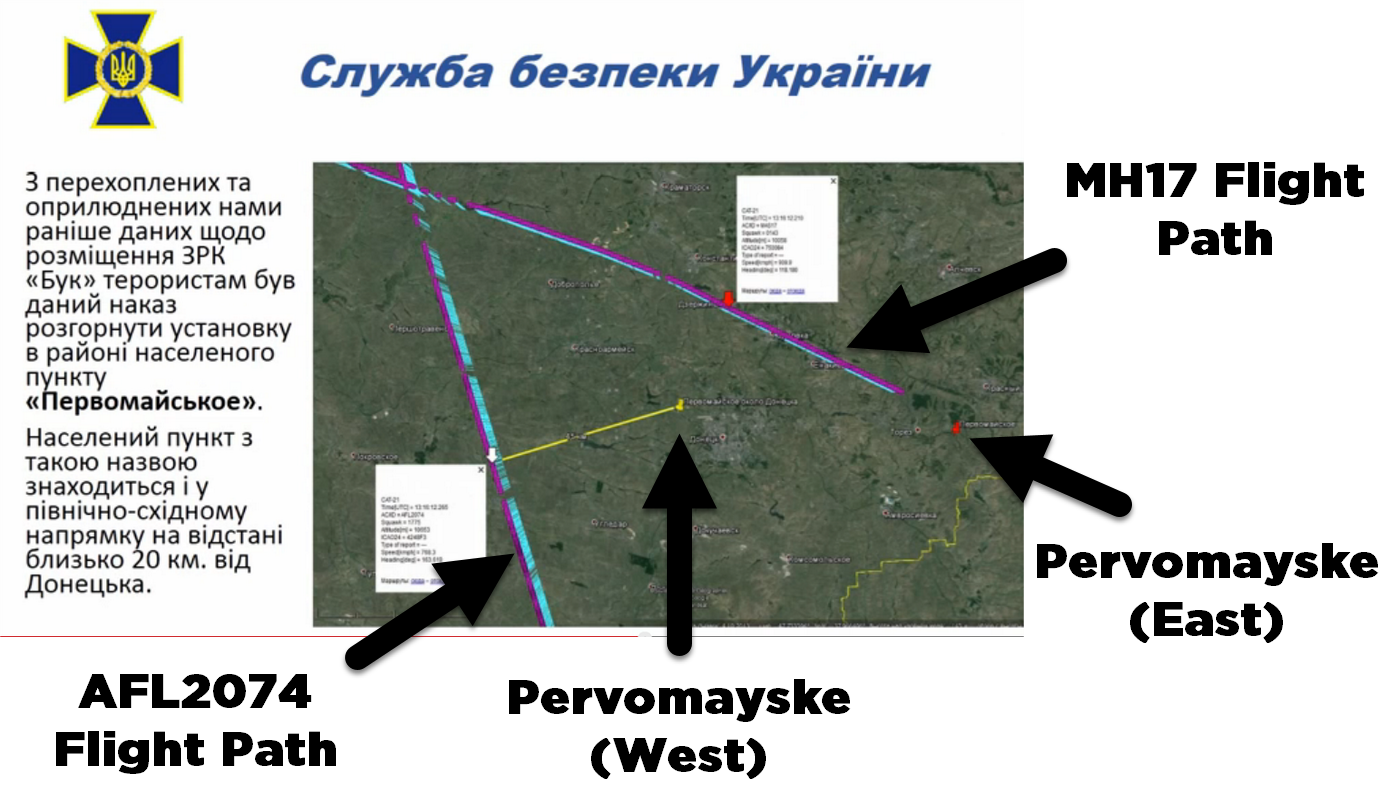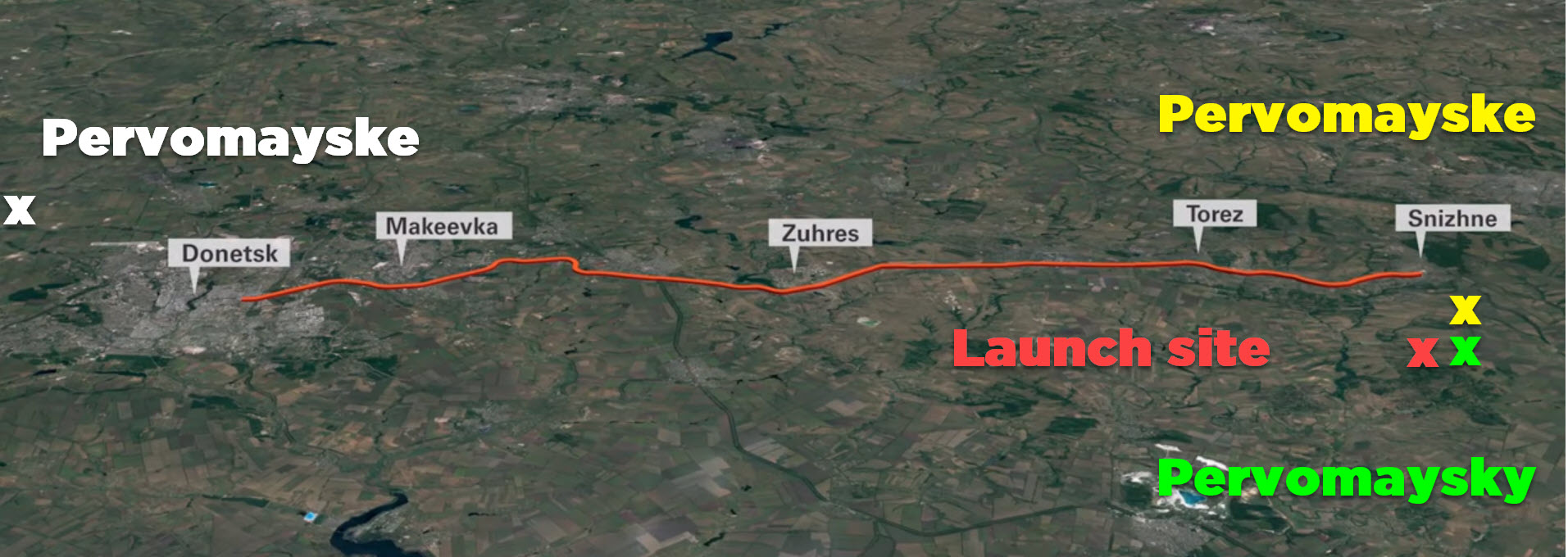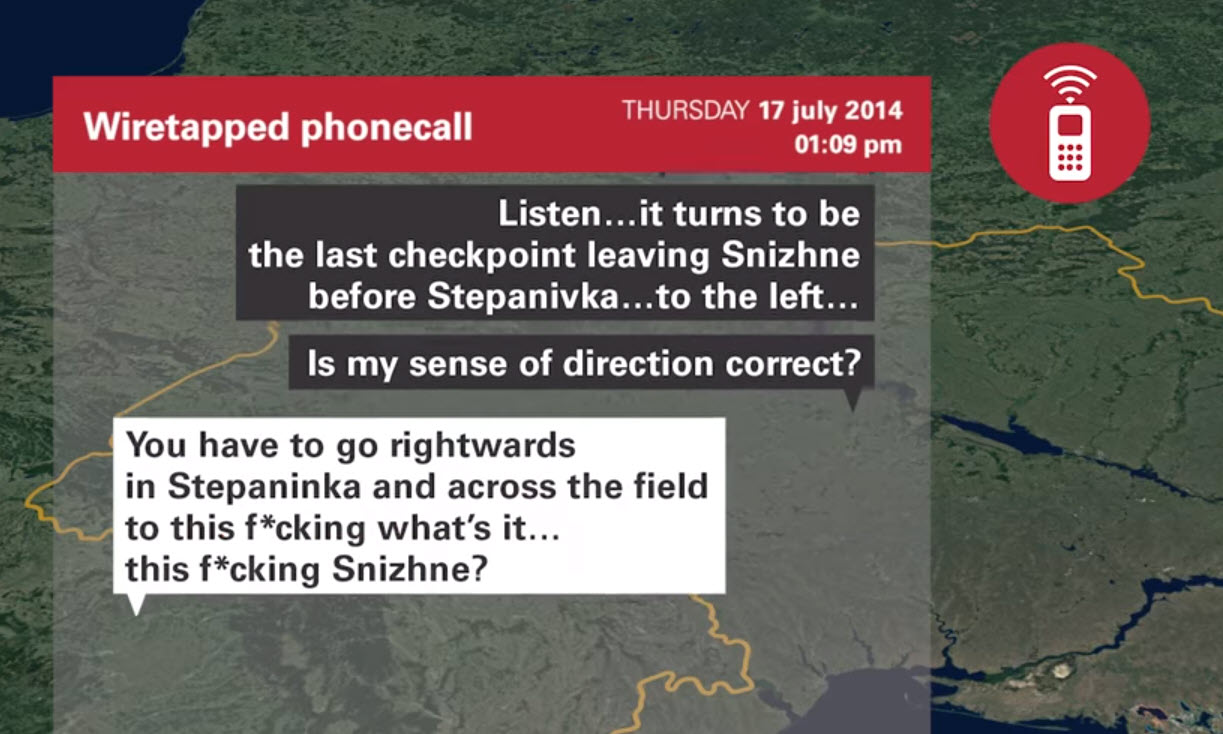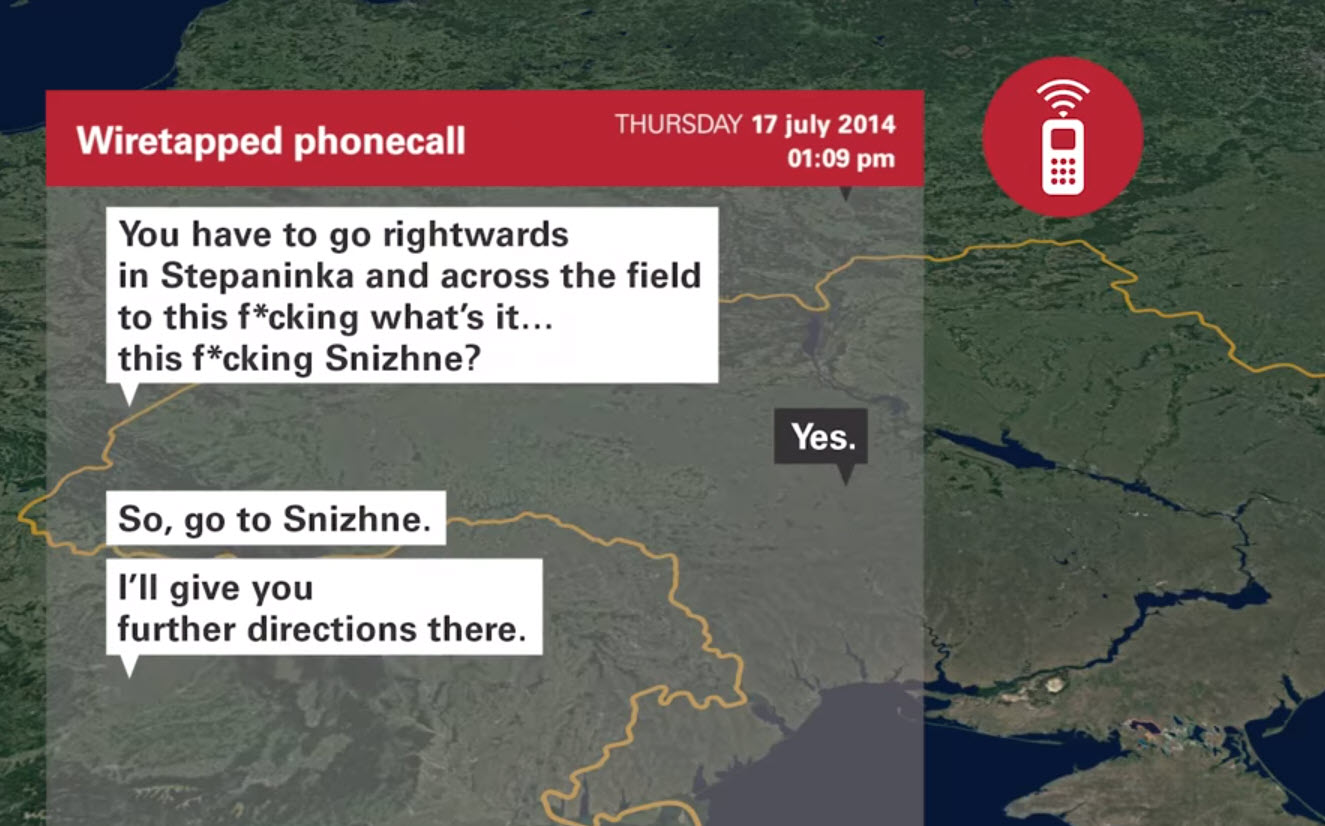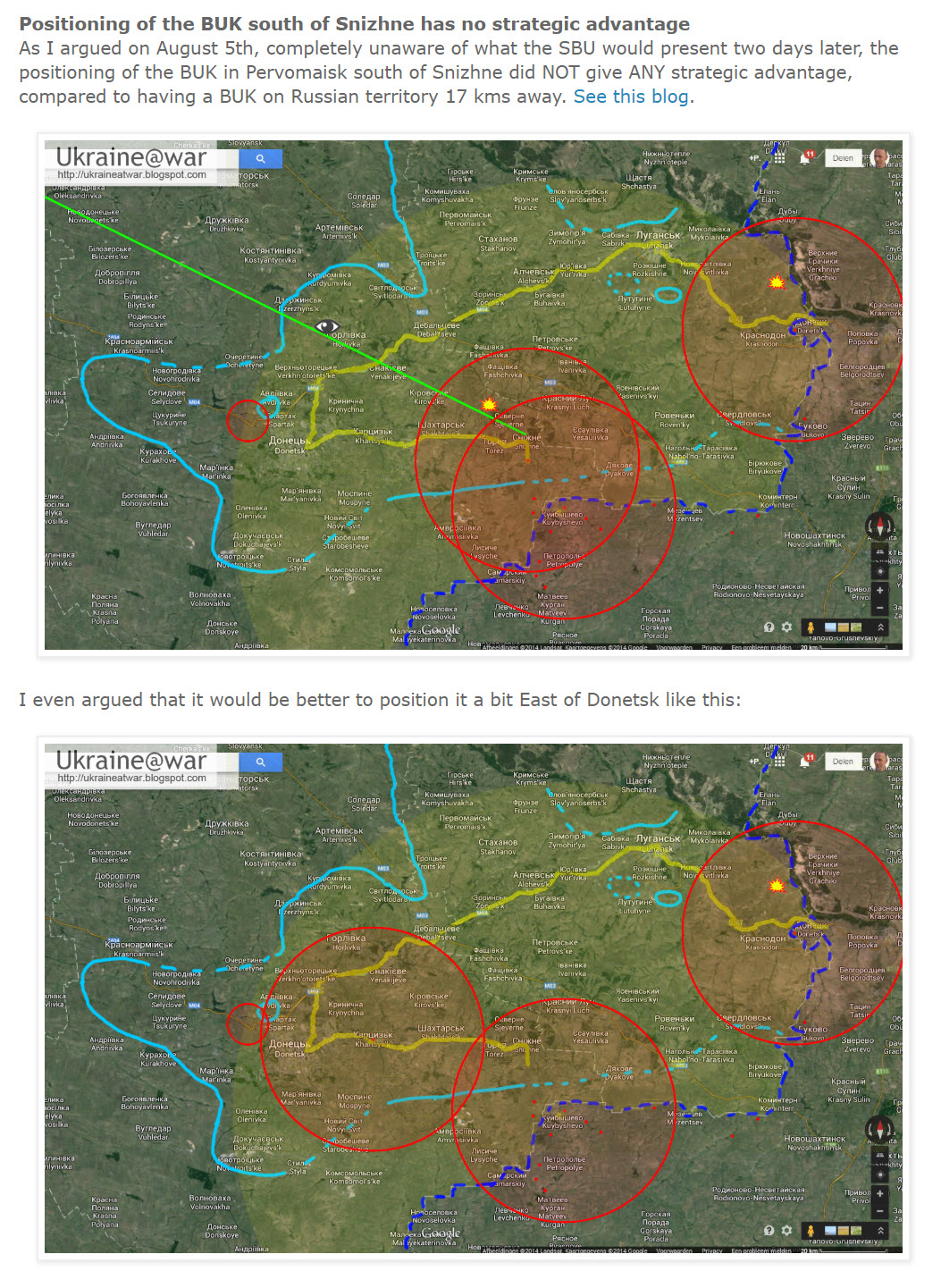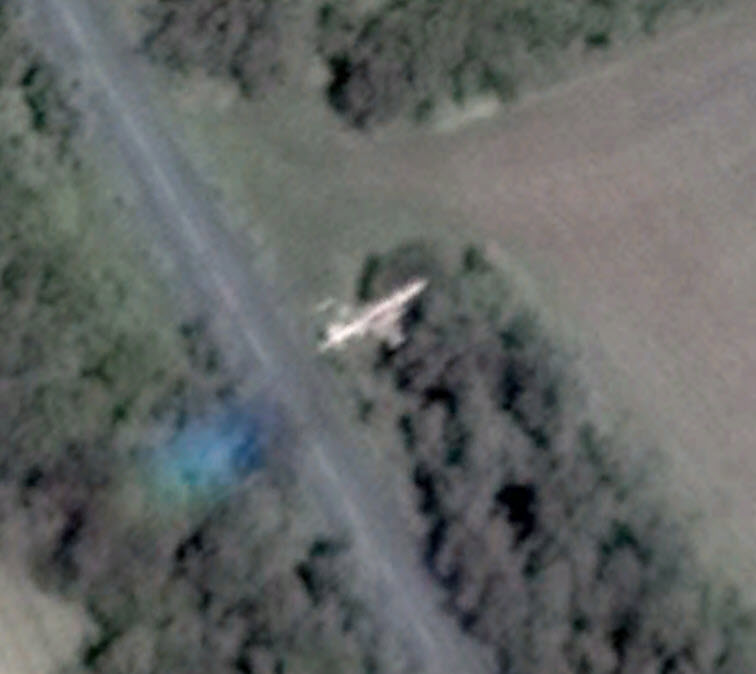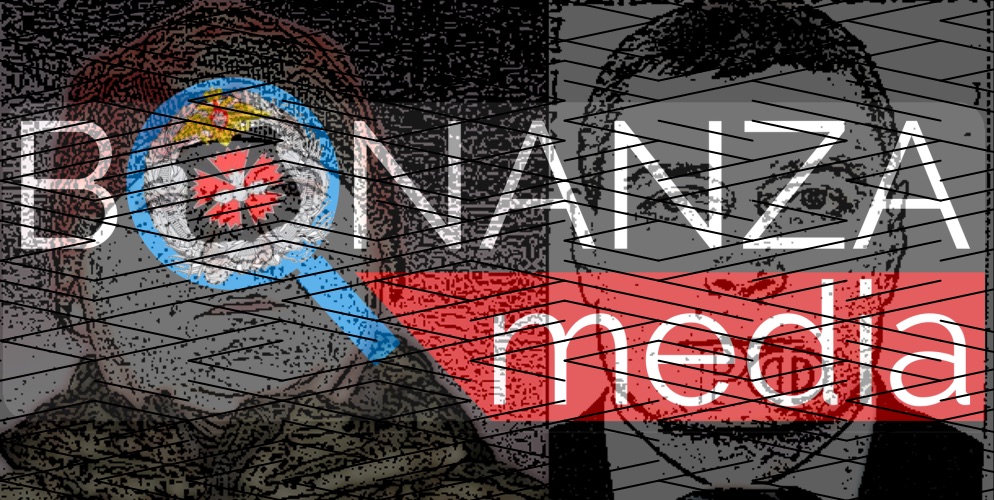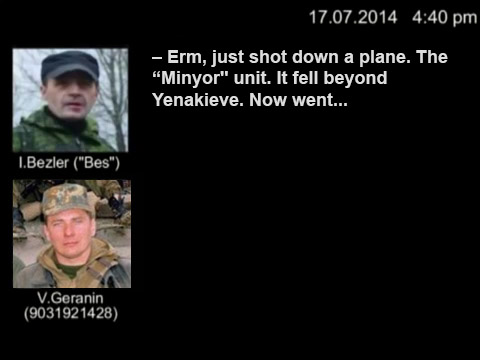Addressing the Aeroflot MH17 Conspiracy Theory
On 8 August 2014, the Security Services of Ukraine (SBU) held a press conference at the Ukraine Crisis Media Centre in central Kyiv describing how they believed that Malaysian Airlines Flight 17 (MH17) was not the true target of the missile launch that killed 298 people on 17 July 2014, but instead Aeroflot Flight 2074 (AFL2074/SU2074). The intent of the downing of the airliner was for a Russian casus belli to invade Ukraine — openly, rather through covert support. The SBU and other Ukrainian government institutions quickly abandoned this theory and no longer refer to it when addressing the downing of MH17; however, a number of analysts and the former head of the SBU have continued to raise the Aeroflot conspiracy theory over the past few years.
As will be detailed in this article, the SBU’s August 2014 assertion that an Aeroflot plane was the intended target for the missile that instead downed MH17 has little basis in reality and has been supported most ardently by then-head of the SBU Valentyn Nalyvaichenko, who was relieved of his duty as the head of the SBU in 2015 and is now the leader of a Ukrainian opposition political party. This conspiracy theory would not be worthy of serious discussion if it were not for Nalyvaichenko and a number of Western, Russian, and Ukrainian analysts who have supported it over the past four years.
Details of the Aeroflot Conspiracy Theory
The August 8th SBU presentation provided the bulk of the material for the “Aeroflot Scenario” that has resurfaced in recent discourse.
The SBU’s presentation provided the following details to support the tremendously bold claim that Russia tried to shoot down its own passenger plane as a “false flag” attack to invade Ukraine:
- The Buk missile launcher that downed MH17 was meant to go to the village of Pervomayske west of Donetsk; however, by mistake due to the fact that the Buk crew was Russian and not familiar with the area, it went to a different village with the same name far east of Donetsk on the day of the downing.
- The route that the Buk took from the Russian border to the launch site south of Snizhne, by way of Donetsk, was not logical if the final destination was the eventual launch site. The route would have been logical if the intended destination was the Pervomayske west of Donetsk, near the Donetsk Airport.
- After downing Aeroflot Flight 2074, the wreckage of the plane would fall in territory under the control of the Ukrainian Armed Forces, thus providing a proof for a casus belli for Russia’s formal invasion of Ukraine.
- The large build-up of Russian forces at the Ukrainian border in mid-July 2014 shows their intention to invade Ukraine, and Russia would need a strong reason to send in its forces to the Donbas that summer.
- The flight path of AFL2074 was similar to that of MH17, thus they could be confused with one another.
Additional details, which will be addressed throughout this post, have been raised by independent analysts supporting this scenario.
Who Has Supported The “Aeroflot Scenario”?
Most recently, analyst Andreas Umland has given credence to the idea that MH17 was a planned attack in an “operation [which] would have followed the pattern of the 1999 bombings of Russian residential buildings which probably was a Russian secret service operation.”
Former SBU head Nalyvaichenko has not backed down from his claim that Russia intended to down an Aeroflot flight, tweeting out in 2016 that it was intended to create a justification “for a full out invasion of Ukraine”. In his 2016 tweet, Nalyvaichenko’s proof for his idea was that “both the MH17 and Aeroflot planes were painted in the same colors” [similar to how some conspiracy theorists claim that Putin’s jet returning from Brazil on 17 July 2014 looked like that of MH17], “there is more than one Pervomayske in Donetsk region,” and that the jet was in the area “at the same time and approximately at the same altitude”. Even though the SBU has long ago backed away from this claim, Nalyvaichenko has not.
Casus belli: the #Russian-backed #terrorists were to shoot down the Russian #Aeroflot jet, not the #MH17, to invade #Ukraine. pic.twitter.com/Rq21x7qls7
— V. Nalyvaichenko (@Nalyvai_V) October 5, 2016
As Umland details in his recent article, this scenario has also been supported or given additional credence by a number of well-known analysts and outlets, including InformNapalm (who have not discussed it much since August 2014), Russian historian Mark Solonin, and in a recent interview with Espreso, American journalist David Satter.
Why the Aeroflot Scenario Makes No Sense
At first glance, it’s easy to see why the Aeroflot Scenario is appealing: there are multiple villages named Pervomayske in the Donetsk Oblast, AFL2047 and MH17 did have similar flight paths, and it is extremely troubling to think that 298 lives were lost for no reason. But even a cursory glance at the events of 17 July 2014 shows that there is no reason to even consider this motive as a possibility.
Pervomayske Confusion
The central element of the Aeroflot Scenario is that an understandable mix-up happened: the Russian Buk operators went to the wrong village named Pervomayske, thus putting the missile launcher in position to shoot down the wrong passenger plane.
Below, a screenshot from the SBU August 8th press conference shows the flight paths of MH17 and AFL2047, with our annotation to the screenshot highlighting the key data points. Both flights passed through the area around the same time in the late afternoon of 17 July 2014.
Below, a map created by the Dutch-led Joint Investigation Team (JIT) shows the route of the Buk on 17 July 2014, overlayed with the approximate locations of missile launch site and the three nearby Pervomaysk villages — two being Pervomayske, and one Pervomaysky. This village name is extremely common in the region as a Soviet holdover, as it means “First of May” (International Workers’ Day).
The Buk crew gathered in eastern Donetsk in the morning of the tragedy, departing some time after 10am, and arriving in Snizhne approximately 2-3 hours later. These two details alone derail the “confusion” scenario, as DNR militants and commanders gave direct and explicit orders for the crew to go eastward towards Snizhne. Sergey “Khmury” Dubinsky, who was quite familiar with the area, relayed instructions to the Donetsk People’s Republic (DNR) and Russian militants in the convoy to meet in eastern Donetsk near a Vostok Battalion base. This meeting place would make no sense if the eventual destination was northwest of Donetsk, and the crew then headed east for hours before arriving in Snizhne. While in Snizhne, the Buk was unloaded near a separatist base in the city center by the Furshet supermarket. As detailed in intercepted phone conversations published by the JIT, at about 1pm that afternoon, a DNR militant with the Buk called for further instructions on where he was to take the Buk, receiving a specific directive to take it past Snizhne.
If the actual target location was the Pervomayske near Donetsk, it would be illogical for separatist commanders to continue to give new directions to the field south of Snizhne.
This scenario does not make any more sense if we were to assume that separatist leadership misunderstood Russian commands about which Pervomayske was the destination. According to the Aeroflot Scenario, this operation was meant to kill nearly 200 Russian civilians, constituting one of the most elaborate false flag attacks in history and among the most significant geopolitical incidents since 9/11, leading directly to the outright invasion of Ukraine. Even accounting for a recent history of incompetence among Russia’s military and security services, it is inconceivable that Russia would provide this missile launcher with the sole purpose of downing an Aeroflot passenger flight and not monitor its progress throughout the day. The false flag would have required absolute secrecy; however, as Bellingcat and others have detailed, the movements of this Buk missile launcher through the Donbas on 17 July 2014 were extremely public, with eyewitnesses and Ukrainian media outlets reporting on its movements throughout the morning and afternoon. The Buk was not moved through eastern Ukraine in a covert mission or under the cover of nightfall after it arrived in Donetsk — it was done in broad daylight along major highways and through city centers, with literal sirens sounding as it passed through crowded streets.
Furthermore, a high-ranking GRU officer, Oleg Ivannikov (“Orion”), was fully aware of the Buk’s arrival and transport in the Donbas. He was one of the most senior conduits between the Russian military and security services and the so-called separatist republics in 2014, meaning that there was a readily-available contact to communicate any urgent directives between Russian and separatist leadership. If DNR military intelligence, headed up by Sergey Dubinsky, made a mistake in sending the Buk to the wrong village, it is unthinkable that this mistake would not have been noticed and reported to Russian military or intelligence immediately, considering how this Buk was, according to Nalyvaichenko, meant to kill nearly 200 Russian civilians and launch a massive war.
Strategic Value of the Buk-M1 at the Launch Site
Another point raised either explicitly or implicitly by the Aeroflot Scenario is to discount the strategic importance of placing a Buk missile launcher in the field south of Snizhne, close to the vital hill of Savur-Mohyla. The village of Pervomayske was also situated along the only proper road between Snizhne and Savur-Mohyla.
This point was addressed directly by Ukraine@War/Dajey Petros, arguing that the MH17 launch site was chosen on accident is that it lacked strategic value compared to a more westward location. This assertion comes from how there was already air defense coverage from Russian systems across the border in this area, while there was relatively little cover closer to Donetsk. Ukraine@War provided two maps with the Buk’s radius in two maps, as seen in the screenshot below:
This assumption ignores the situation on the ground on July 17th. Just two days before the MH17 shootdown, a Ukrainian jet missed its mark while trying to bomb a separatist base in central Snizhne. Eleven civilians died. On either July 16, Igor “Strelkov” Girkin and Aleksandr Borodai, two of the highest ranking DNR officials and commanders, personally visited an area near Stepanivka that is just a few kilometers away from the eventual MH17 launch site. A Strela-10 anti-aircraft missile system was present in the background of an interview with Girkin at this location.
On 16 July 2014, the day before the MH17 shootdown, a satellite image on Google Earth shows a Su-25 fighter jet– certainly a Ukrainian one — near the area where Girkin, Borodai, and eventually the Buk that downed MH17 were present.
Below, a map shows activity in the area from July 15 to 17th, including the July 16th shootdown of a Ukrainian Su-25 fighter jet near Hryhorivka, 13 kilometers south of the MH17 launch site. Clearly, the area was heavily contested in mid-July 2014, especially in regards to Ukrainian airstrikes and Russian/DNR air defense.
While some have argued that the Buk TELAR sent to Ukraine must have been intended to down a passenger plane due to the significant heights its missiles can reach, this is also unconvincing when considering the tremendous strategic value of securing the skies around Savur-Mohyla in mid-July 2014. The Buk-M1 is able to down targets flying at a much higher altitude (~22,000 meters) than MANPADS (the common 9K38 Igla system can reach ~3,500 meters) or the Strela-10 anti-aircraft missile system (~3,500 meters), and there are many non-civilian targets that the Buk-M1 can reach that the other systems present near Savur-Mohyla could not. The Su-24 jet, for example, can reach 11,000 meters, the An-26 cargo plane can reach 7,500 meters, and the Il-76 cargo plane can reach 13,000 meters. While these aircraft can be and were downed by systems less powerful than the Buk-M1 throughout the Ukrainian conflict, there is clear value to having an extremely powerful anti-aircraft missile system to provide additional support in the area. Additionally, the operating range of the Buk-M1 is much greater than other systems present in the area, providing an additional layer of air defense in the area in which the Ukrainian Air Force was extremely active at the time.
Lastly, and perhaps most obviously, we can point to the intercepted private conversations between the Russian and DNR commanders from mid-July 2014, discussing how a Buk was coming to the area to provide protection from constant Ukrainian aerial strikes. Dubinsky specifically mentions the activity of Ukraine’s aerial force near Marynivka, which would have been within the operational radius of the Buk system while at the MH17 launch site.
The Roundabout Route
The SBU’s August 8th press conference and other promoters of the Aeroflot Scenario have pointed to the meandering route that the Buk convoy took from Russia to the launch site south of Snizhne as evidence that the intended destination was west of Donetsk.
The approximate route that the Buk took from the Russian border to the launch site–with some likely inaccuracies in the exact roads taken, such as between Alchevsk and Debaltseve and uncertainties surrounding the route between Yenakieve and Donetsk–can be seen below.
The argument that there was a more direct route from the Russian border to launch site can be countered with a few key details. For one, other border crossing points, such as due south and east of the launch site, were not safe to use at the time due to pockets of Ukrainian control. The crossing point near Severny was used extensively in July 2014, even though equipment had to taken a fairly lengthy trip to Donetsk from there.
We can observe military equipment take roughly same route on July 15, two days before the MH17 downing. Below, we see that a convoy with Russian military equipment took the same route from the border to Donetsk, with some differences between Yenakieve and Donetsk.
It was vital that the Buk passed through Donetsk because this was the meeting point for a number of Russian and DNR militants answering to Sergey “Khmury” Dubinsky. A small convoy of tanks from the Donetsk-based Vostok Battalion left at approximately the same time as the Buk convoy and traveled along the same route to Snizhne.
In other words, the route that the Buk took from the Russian border, through Luhansk, Donetsk, and eventually to Snizhne, was possibly the safest available route for Russian and DNR forces at the time. Another possible route was from Yenakieve to Shakhtarsk, skipping Donetsk; however, meeting in Donetsk was easier with a number of Russian/DNR commanders and militants present there that morning. As seen in the July 15th map above, there were a number of Russian/separatist checkpoints and fortifications along this route.
Battles were raging near the Luhansk Airport (south of Luhansk) in mid-July 2014, making the area between Luhansk and the southern Russian border unsafe for a military convoy, especially with a piece of equipment as valuable as a Buk TELAR.
This route does not lend any additional credibility to the idea that the western Pervomayske village was the intended destination for the Buk, as a Russian/separatist convoy would have had to take the same route for both the “eastern” and “western” Pervomayske villages. If anything, the fact that Russian and DNR forces met in eastern Donetsk, rather than a more central or western location such as the Donbass Arena, shows that the intended destination was always eastward, rather than westward, from Donetsk.
Conclusion
Assigning a more nefarious motive than incompetence to the downing of MH17 has been a common practice since the tragedy took place. The JIT has been tasked with determining the motive and series of events that led to the downing of MH17, and much of this can only be determined through detailed investigative work outside of the realm of open source information. However, readily available open source information can easily debunk the fringe idea of assigning the motive to the downing as originally being a false flag attack targeting an Aeroflot plane. This idea is entirely rooted in two details — the coincidence of the flight paths of MH17 and AFL2047 and the multitude of villages called Pervomayske and Pervomaysky in the Donbas. However, it is hard to take this idea seriously when comparing these two details rooted in coincidence with the materials uncovered from four years of investigative work supporting the idea that the intended destination of the Buk was to a field south of Snizhne, providing a powerful layer of air defense to an area suffering from constant Ukrainian aerial attacks.
